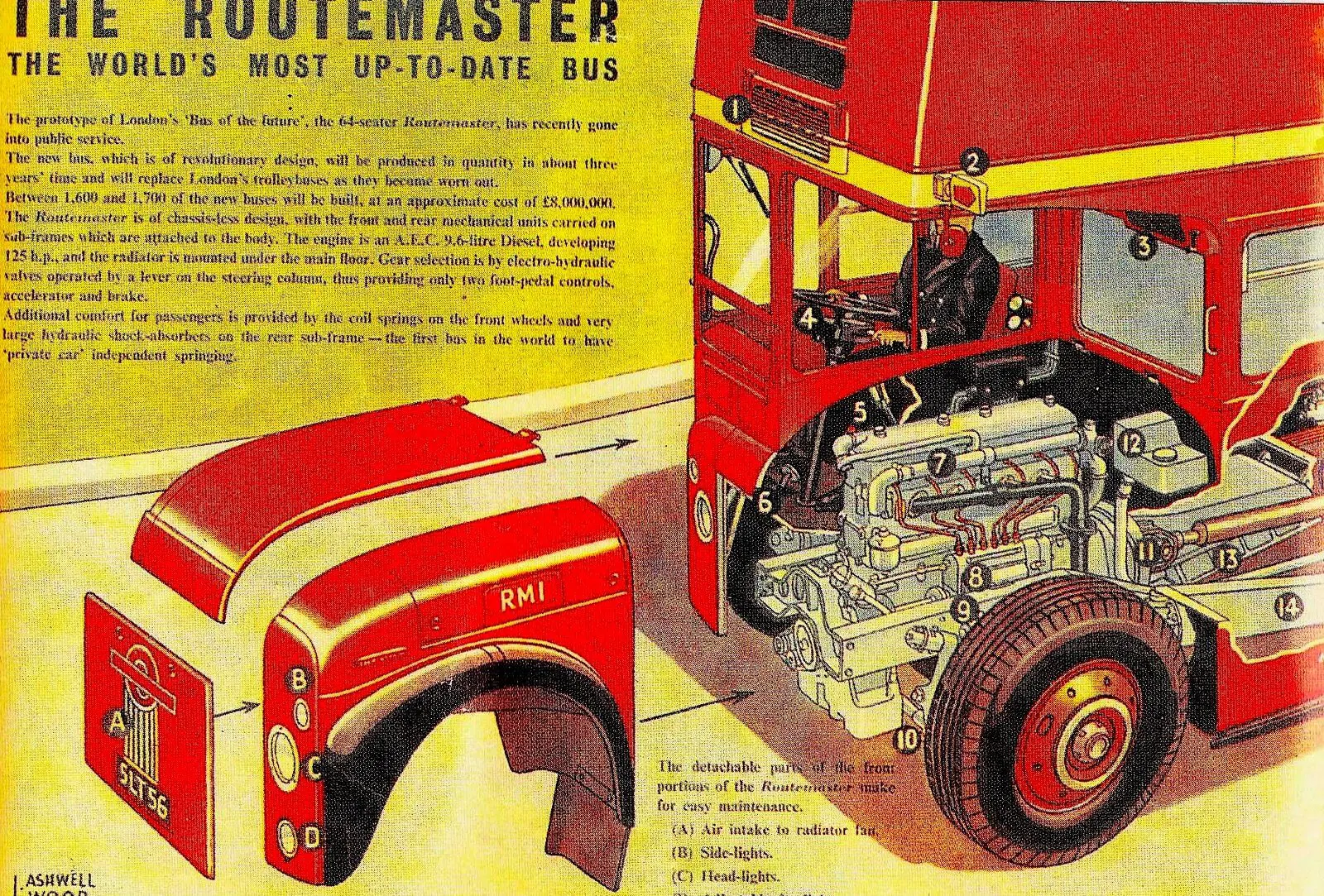THE ROUTEMASTER RETURNS TO LONDON
02 December 2022
On the 12th October Time Out published some welcome news for all classic vehicle enthusiasts. Particularly those who appreciated double-deckers of quality:
A company called ‘Londoner Buses’ is starting a new regular bus route in central London entirely equipped with vintage Routemasters. The line, which will be known as Route A, will run from Piccadilly Circus to Waterloo Station and back, taking in Trafalgar Square, Horse Guards, Parliament Square and Big Ben, and the London Eye en route.

And so, in tribute to the Routemaster, a survivor from a realm of gas-lit streets, teddy boys and cafes with Formica tables, here are 12 facts about London’s most famous bus -
- The first Routemaster, RM1, ran the 2 route from Golders Green to Crystal Palace on Wednesday 8th February 1956. Among its many novelties were flashing direction indicators.
- RM1 also boasted a heating system for the interior, which was a ‘first’ for a double decker in the capital. In December 1956, London Transport (LT) told The Evening Standard this was because “the vast majority of passengers travel for short distances only”.
- LT formulated plans for the Routemaster in 1947 and by 1952 they decided it should be able to seat sixty-four passengers.
- The running gear for the Routemaster was mounted on detachable sub-frames for ease of overhaul and there would also be hydraulic brakes - the system on the older RT often frozen in winter. Independent front suspension was another ‘first’ on a London bus and a four-speed automatic gearbox meant for a smoother ride.
- The automatic box would also allow trolleybus drivers to transfer to Routemasters as they often lacked experience with vehicles fitted with gears.
- LT used their WW2 experience of lightweight aluminium when they were involved in Halifax bomber production for the Routemaster.
- Douglas Scott, who had previously been responsible for the Aga cooker, devised an interior that was more luxurious than the RT. He also included winding windows for the passengers, a sliding door for the driver and a cubby hole for the conductor.
- The new bus exceeded the famous ‘tilt test’ by several degrees. However, Travis Elbrough's notes in his fascinating book The Bus We Loved: London's Affair with the Routemaster, no prototypes underwent a head on crash as the engineers “balked at the cost”.
- LT further evaluated the Routemaster at the MIRA vehicle proving ground in Nuneaton as well as at the Ministry of Supply track at Cobham.
- The Eagle described RM1 as “The world's most up-to-date bus” and The Guardian was equally impressed. “A new system of springs and a mellifluous gearbox cushion the passenger from shocks as effectively if he was riding in a luxurious saloon car”.
- In 1956 LT planned to test four Routemasters over the next three years. If they proved a success, they would replace the existing trolleybus network. This was indeed the case and the last trolley ran on the 8th May 1962. The RT remained in service until 1979 while London Transport used the Routemaster on standard routes until December 2005.
- As for RM1, it made its debut at the 1954 Earl's Court Commercial Motor Show - NEW LONDON BUS - YouTube. It left passenger service to become a training bus in 1959. Five years later RM1 acquired the now familiar radiator grille and in 1972 LT sold it to the Lockheed Corporation for brake trials. They donated it to London Transport in 1986 for their historic fleet.
For more information - https://londonerbuses.co.uk/about
